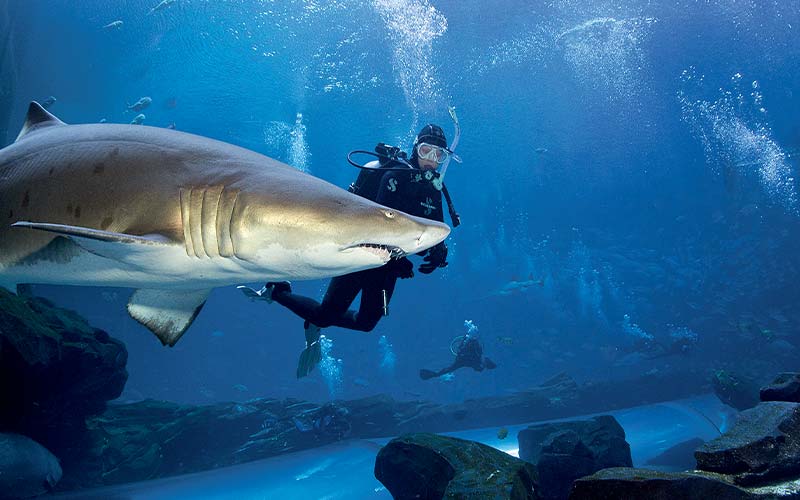The weather was bright and warm as my daughter’s fifth-grade class descended upon the water park. As a chaperone, I was looking forward to having fun with her friends and more than willing to get wet and serve some pizza. We had the place to ourselves, and the kids quickly spread out to enjoy the waterslides and pools. These 11-year-olds on the brink of middle school were definitely ready to cut loose and relax.
Suddenly, I realized something was terribly wrong and found myself sprinting across the deck and into the water. A lifeguard was just coming to the surface with one of the children. No whistle, no splash. In fact, none of the other children nearby even realized what had happened. As it turns out, one of the students had never been to a pool, and the family did not tell the school she was unable to swim. On the lazy river ride, surrounded by friends and in water only hip deep, she had slipped beneath the surface.
I give credit to the lifeguard for her vigilance in spotting the victim in the water, but it was what happened next that made me realize how exceptional DAN’s emergency training is.
I assisted the lifeguard and helped assess the child in the water. She was initially unresponsive and, as no one had seen her go under, we didn’t know exactly what happened or how long she had been submerged. It wasn’t clear whether she hit her head, had a seizure or just became overwhelmed. From my rescue training, I had learned to treat any unexplained loss of consciousness as a potential neck injury. I mentioned this to the head lifeguard, but he deemed such a precaution unnecessary. Later, when the paramedics arrived, I was relieved to see them quickly stabilize the injured girl’s head with a cervical collar and foam blocks from the ambulance.
My DAN training was further validated when the victim was secured to the backboard. While helping support the backboard in the water, I pointed out that the girl’s arms were not secured properly and the straps could suddenly loosen. Again, the pool staff assured me that it was done “the way they had been trained.” Afterward, when the paramedics prepared to move the victim onto a gurney, they restrapped her arms in the manner I had learned in my classes.
It was very clear to me the instruction I had received was exactly what the paramedics applied in their care of the victim. While I was frustrated that, as a chaperone, I had a limited ability to affect the park staff’s procedures, I was grateful to know the quality of my training was very high.
Aquarium Diving
I’m a volunteer diver at the National Aquarium in Baltimore, Md.; I completed DAN’s Diving First Aid for Professional Divers course as part of my job as an emergency first responder there. The DAN training and clear safety protocols are incorporated into everyday life at the aquarium. Nearly 200 volunteer divers, approximately 60 staff divers and most of the frontline employees receive this specialized instruction. Knowing how to recognize an emergency, properly use the available equipment and work effectively as a team are essential to a successful rescue.
To keep our skills sharp, the dive teams perform drills in the aquarium during visitor hours. This makes the drills much more realistic and demonstrates the importance of emergency training to the public. Performing water rescues from the exhibits over platforms and through narrow gates — with more than 500 visitors watching — is a true team effort. Occasionally there’s even the added excitement of an overly curious sea turtle, shark or moray eel.

Aquarium diving is a specialized form of scuba diving. As in wreck or cavern diving, additional training and awareness are necessary to be safe in enclosed and complex environments. Our dive safety officer, Chuck Eicholz, and his staff do an outstanding job of ensuring we have what we need to safely enjoy doing our job. The aquarium routinely offers opportunities for additional training, which benefits volunteers, staff and visitors alike.
While this near-tragedy on the field trip was accidental, nothing about the rescue was. Working with other trained responders, I realized it was the aquarium’s safety-oriented mindset and the comprehensive DAN training I had received that made the difference in my actions that day. No matter where you are, the importance of water safety should not be ignored.
My daughter had her own challenges learning how to swim. Since she did not want me “hanging around her the whole time” during the field trip, I decided to take her to a local pool to make sure she could pass the swim test. It was my requirement for letting her play at a distance while at the water park. After we received the news that her classmate would be all right, my daughter told me she finally understood why I had been so protective with her around water.
One unexpected casualty of the day’s events was my new iPhone. I had it in my pocket the entire time, and after standing in hip-deep water for 20 minutes, it was saturated. I went to the Apple store later that day, sans replacement plan, and told them what had happened. I was stunned when they handed me a new phone and quietly said, “That is the best reason we have ever heard for getting your phone wet, and we think you should have a new one.”
The wallpaper on my new phone is a picture of the DAN Challenge Coin I was awarded for using my training to provide aid in an aquatic emergency. Now each time I use my phone I remember that being prepared can really make a difference.
© Alert Diver — Q1 Winter 2012